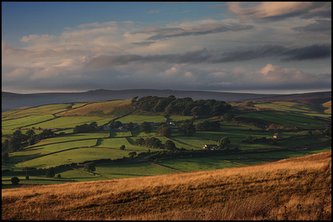
One of the most popular and useful filters for the landscape photographer is the graduated neutral density filter. These come in varying strengths. Their purpose is to even out exposure values in the sky and the land.
Technically perfect use will render sky and land at the correct values mimicking what we see with our eyes. A more artistic interpretation, much favoured by landscape photographers, is to darken the sky even more, creating a sense of drama.
The same effect can be achieved by taking two exposures of the same scene, using a tripod to keep everything in the same place and then overlapping the images. Digital capture and editing have made this option easy and convenient. The technical side of how to do this is elaborated on below.
But first let's look at the pros and cons of both methods.
The pros for ND grads are:
> you get the exposure right in a single shot which saves space on your memory card
> if anything is moving across the frame then it will register correctly whereas a double exposure will leave you with problems in the overlapping areas
> you don't need a tripod, which means you can work faster
The pros for multiple exposures in RAW are:
> you get the full benefit of the quality of the lens with no filter in front
> more control over the end result
> very precise control over the amount of graduation and exactly where it falls
> no messing about with lining the filter up
> no problems with vignetting on super-wide angle lenses
Now here's a good tip. One of the 'mistakes' that photographers make when using the combined RAW files method is that they try to divide the two different exposures between the sky and land using precise selections in Photoshop. They then complain that it does not look natural and not as good as when using a ND Grad. Of course they're missing the all important graduated transition part from the equation.
The way I work it is to mimick the effect of an ND Grad by applying a transparent graduated filter in Photoshop across the top of the second exposure's layer mask. This, to my eye looks far more natural and allows precise control over the transition area.
Try and guess how my shot of Yorkshire above was created. Ultimatley it doesn't matter how you get there so long as the end print is stunning. I use both methods. My favourite is probably the Photoshop route but it all depends on the subject.
Cheers,
Paul

Comments
Marleen
All the best,
Paul